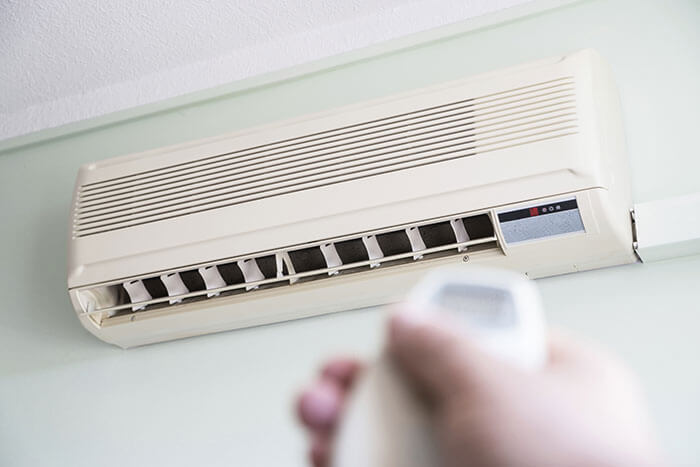
Installing Air Conditioning in an Older Home
If you are thinking about installing air conditioning in your older home, your options aren’t just limited to noisy window or wall air conditioning units or portable systems that won’t cool the whole house. And it’s not necessary to tear apart walls to install new duct work for a central air conditioning system, either.
One option is a high-velocity air conditioning system that uses two-inch, insulated air-supply tubing to deliver chilled air. Another option is a mini-split air conditioning system, sometimes called a ductless air conditioning system, which connects to the outdoor compressor by means of a slender refrigerant and power line. Because nearly 30 percent of a conventional central AC unit’s energy escapes through ducts, these units may also be more energy efficient and, therefore, less expensive to run. The increased cost of installing duct work in an older home offsets the more expensive purchase price of mini-split and high velocity air conditioning systems.
This article explores both options, along with other considerations for installing an air conditioning unit in an older home.
High Velocity Air Conditioning System
High Velocity air conditioning uses aspiration, or a strong burst of air, to circulate cooled air through a warm room. A system with a high aspiration ratio offers more cooling capabilities with lower power costs.
The insulated tubing that carries air through the house fits into small spaces between wall joists and under the floor, meaning homeowners won’t have to mar large areas of existing plaster ceilings, wood floors, or even sheet rock and paneling. In a house with a lot of bends and corners, the tubing is much easier to install than heavy metal duct work. An HV air conditioner only requires one return vent, again minimizing the amount of cutting required. This helps preserve the look of an older home while also keeping installation costs down.
Mini Split Air Conditioning System
A true “ductless” system, a mini split unit is composed of multiple evaporator coil units with their own blower fans in separate boxes. The coils connect to the outside condenser unit by means of a thin conduit. A mini split air conditioning system provides the installer with multiple mounting options, too. The mini units can be:
- mounted on a ceiling
- flush-mounted in a drop ceiling, much like recessed lighting
- hung on a wall
No venting is required for these units. Since each unit features its own thermostat, a mini split air conditioning system is perfect for houses where many rooms remain unoccupied during the day.
A mini split system also offers “room to grow.” An installer can supply as many evaporator coil/fan boxes as a homeowner needs and easily add more as time goes on.
A Note about Electricity
Installing an air conditioning system in an old home means a lot more than just selecting the right unit. Many older houses have only 110 volt, 60 amp electrical capabilities.
Central AC units, even ductless systems, require a dedicated 230 volt circuit, often with 20 to 50 amps of power. Speak to an electrician prior to calling in an HVAC contractor to make sure your home meets the energy requirements for installing a new air conditioning system.